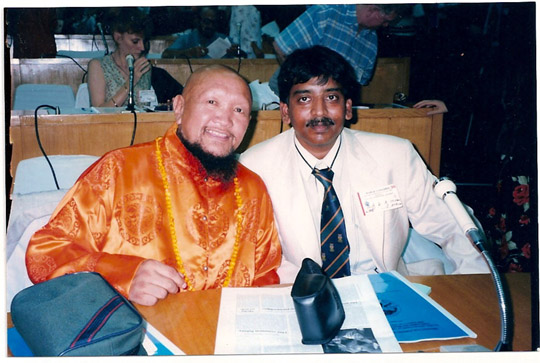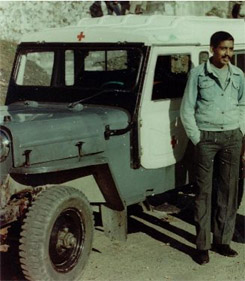Dec 29, 2025
Dec 29, 2025
Where can be Shangri-La?
Kuen-Lun, or Kwen-Lun, a term used to designate generally the mountain ranges which run along the northern edge of the great Tibetan plateau in Central Asia. In a wider application it means the succession of ranges which extend from the Pamirs, until it strikes against or merges in the steep escarpments of the South East flank of the Mongolian plateau. In the narrower acceptation it applies only to those ranges which part the desert of Takia-makan on the North from the Tibetan plateau on the South between the Pamirs and the transverse glen of the Kara-muren, that is, nearly to the longitude of the town of Cherchen.
Kuen – Len is considered the backbone of the Himalayas. There are mountain ranges still undiscovered, people staying are nomads depending on the weather and mountain passes for trading in salt and leather from India, Bhutan, Pakistan and China.
The border trading posts would be the ideal place for exchanging any news from either side. Suspicion, language barrier and army intelligence, all make it nearly impossible to track people and places in the Himalayan region.
James Hilton writes “They looked just like a white frieze on the horizon that was all. At Yarkand and Kashgar I questioned everyone I met about them, but it was extraordinary how little I could discover. I should think they must be the least explored range in the world. I had the luck to meet an American traveler who had once tried to cross them, but he had been unable to find a pass. There are passes, he said, but they are terrifically high and unmapped. I asked him if he thought it possible for a valley to exist of the kind Conway described, and he said he wouldn’t call it impossible, but he thought it not very likely – on geological grounds, at any rate. Then I asked if he had ever heard of a cone-shaped mountain almost as high as the highest of the Himalayas, and his answer to that was rather intriguing. There was a legend, he said, about such a mountain, but he thought himself there could be no foundation for it. There were even rumors, he added, about mountains actually higher than Everest, but he didn’t himself give credit to them.
My belief in Shangri-la took me to the borders of Bhutan with China, Arunachal Pradesh and Sikkim in India and China, Nepal and China. Many a times I went illegally into China with the help of tribals and army outposts to gather any such story about such a lamasery. I was ridiculed but in the process I met some very nice people and witnessed some extraordinary events that changed my outlook towards life.

With His Holiness Lama Genchen, Tibetan Medicine Healer and a Spiritual Thinker
Bhutan – Land of the Golden Dragon
Bhutan and Sikkim and its adjacent Himalayan ranges crossing into Tibet is the ideal place for trading for Tibetan tribals since decades who cross into each others borders without much restriction. His Holiness, the Dalai Lama as a child crossed into Sikkim with his caravan, years back. The Sunday flea market at Thimphu is one such place where for years I met different people, conversing in broken Dzongkha and Tibetan and enjoying the confidence after a couple of glasses of local wine. I found caravans coming from Lhasa and further remote areas of Xainza and Tomra. Tsunthan and Lachung in Sikkim had similar trading posts and I was in touch with them all. I crossed into the Chinese territory next to Ha in Bhutan and enjoyed the warm welcome of Lamasery there. I heard tales which were not authenticated about places deep in Kuen-Lun which had Lamaseries and the lamas who depended on a chain of caravan routes for their necessities from the outside world.
Some Lamas had extraordinary healing powers and showed deep insight in philosophy and spirituality without attaining any formal western education. Most of them disappeared without a trace, traveling on the Kuen-Lun Passes to unknown destinations.
 A strange incident occurred that further restored my belief on Shangri – La.
A strange incident occurred that further restored my belief on Shangri – La.
So this is something which happened many years back. Something which stuck to me, fibrils like so many others. It was in 1985. I was working in a high altitude hospital in the Kingdom of Bhutan.
Evenings use to arrive by 3 p.m. and that was the time when my batman, a singular chap by the name of Sharief use to prepare my tray of "chota" (small in Hindi) peg of rum with spicy lamb pieces. Eventually I use to hit the bottle accompanied by belting Urdu ghazals from the audio system and a roaring fire. It uses to be foggy all day and temperatures were subzero and I remained foggy at night.
I lived and loved the Dzongkha way of life.
One day I learnt that my patients are being treated by a Buddhist monk, a Lama who happened to be passing by. It was only when I found out that he was treating such diseases like cancer that I decided to give him a visit. I knew Bhutanese herbal medicine is very evolved and there is a Institute of Indigenous Therapy in Thimphu, Bhutan. His Majesty Jigme Singye Wangchuk has given his country a new outlook yet preserving the culture and traditions which has made this mountain kingdom an unique place, the last Shangri-la.
Page: 1 | 2 | 3 | 4 Continued
19-Feb-2006
More by : Dr. Amitabh Mitra